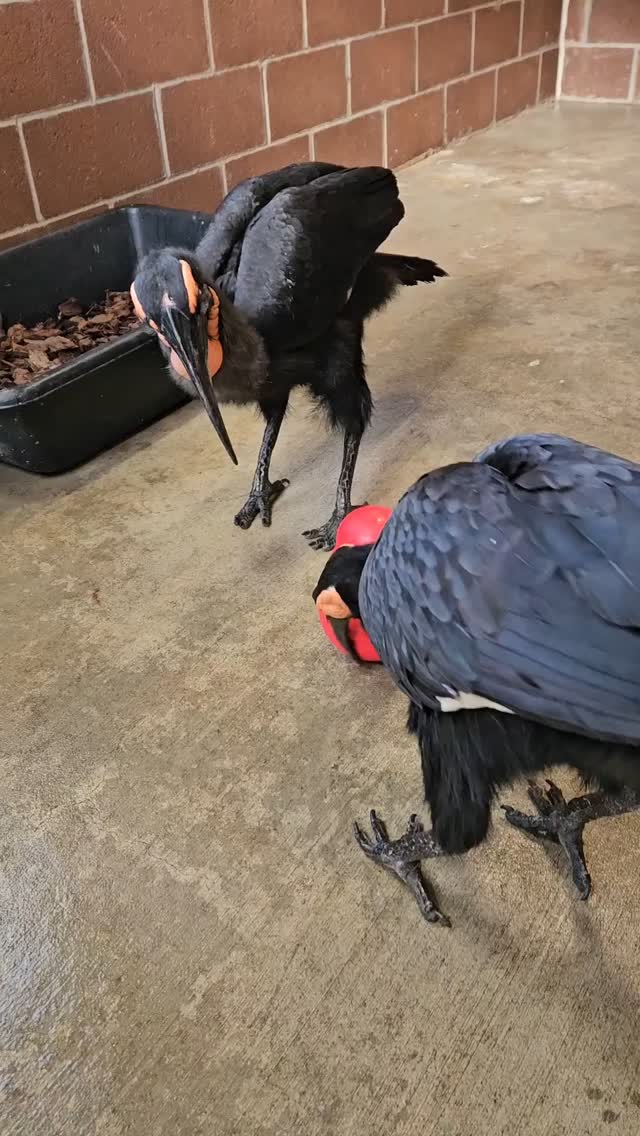- The impact of cold weather on African native hornbills and why keeping them indoors is necessary.
- Techniques and activities used in zoos to engage hornbills indoors during winter.
- The behavioral dynamics between hornbills, focusing on sibling interactions as observed in captivity.
- The role of zoo management in maintaining animal welfare and conservation goals for African hornbills.
- An overview of African hornbills, their ecological role, and the efforts in place to preserve their habitat and population.
African native hornbills, with their striking prominence in ecosystems, face significant adversities when exposed to freezing temperatures. Native to warmer climates, these birds experience stress when the temperature drops, necessitating indoor housing during colder seasons. At zoos, such as the one attended by Keeper Julia, ensuring the well-being of hornbills involves maintaining a controlled climate that mimics their natural habitat as closely as possible. African hornbills are susceptible to cold stress, which can lead to various health issues, including respiratory infections and hypothermia. This makes it imperative for caretakers to provide an environment that meets their thermal comfort needs.
While housed indoors during chilly weather, hornbills must remain engaged to prevent behavioral and psychological issues. Zoos implement various enrichment activities to stimulate these intelligent birds. Activities may include puzzle feeders, hidden food challenges, and interactive toys designed to mimic foraging behaviors found in the wild. By using these enriching methods, zoos keep hornbills physically active and mentally engaged, ensuring their overall health.
Notably, these enrichment activities often reveal fascinating behavioral intricacies among hornbills. For instance, sibling dynamics become apparent during activities. In the example where Wednesday and Morticia, a pair of hornbill sisters, interact, we observe typical sibling rivalry. Wednesday may do most of the work during an enrichment task, but Morticia might swoop in to claim the reward, in this case, a worm. Such interactions are not only entertaining but also offer insights into their social behaviors and hierarchies.
Zoo management plays a crucial role in ensuring that hornbills receive optimal care, which involves a framework that balances animal welfare with educational and conservation objectives. This includes training staff in best practices for animal care and collaborating with conservation organizations to promote the survival of hornbill species in the wild. Key strategies involve habitat preservation and supporting breeding programs to bolster population numbers. Zoos often partner with global networks to spread awareness and garner support for these efforts.
African hornbills serve a critical ecological purpose, acting as seed dispersers in their native habitats and thus maintaining forest dynamics. Conservation efforts aim to protect this delicate balance. Given the human-induced threats such as habitat destruction and illegal wildlife trade, the urgency to protect these birds is at an all-time high. Conservation programs focus on habitat restoration and mitigating dangers posed by expanding agricultural land.
Highlighting these issues can catalyze greater involvement from the public and stakeholders in supporting conservation efforts. Through education and strategic partnerships, zoos not only preserve hornbills in captivity but also contribute significantly to their preservation in natural habitats. Engaging the audience through interactive exhibits and educational campaigns can foster a stronger connection between people and the plight of African hornbills.
Ultimately, the African native hornbills’ experience touches upon broader challenges in animal conservation. The delicate interplay between maintaining animals in captivity and ensuring their welfare reflects a microcosm of larger conservation battles. By understanding the needs of hornbills and the methods employed to cater to those needs, we fuel our journey towards safeguarding the natural world. Through concerted efforts, both at the local and global levels, we can aspire to create a sustainable future for African hornbills and the ecosystems they support.
*****
Source Description
It’s too cold for our African native hornbills to be outside, so we have to keep them busy inside! Notice how Wednesday does all the work, and Morticia steals the worm. Typical sister behavior. 😂
📷 Keeper Julia


